Table of contents
Cloves or spice cloves ( Syzygium aromaticum ) are mainly called cloves . When dried, their appearance is reminiscent of small nails, hence the name Nägeli .
Use in the kitchen:
Cloves are mainly used to flavor desserts such as apple sauce, preserved pears, plum jam and compote. In this combination they harmonize with cinnamon , nutmeg , star anise and lemon . Small amounts of cloves give stocks, soups, sauces and marinades a special flavor. Cloves (Nägeli) are often used only to convey flavor and are removed after boiling.
Spicy dishes such as rice dishes, pastries, curries, red cabbage (blue cabbage) and pickled vegetables (cucumbers or sauerkraut ) get a special taste from cloves - together withpepper , bay leaves , allspice , cardamom , ginger and coriander .
Whole cloves are added to hot drinks such as mulled wine or punch in the run-up to Christmas. Certain liqueurs or fruit juices only get their special aroma when they contain cloves.
Ground Cloves develop their unique aroma the fastest. In this form they are known in Christmas biscuits or as an ingredient in curry powder .
Only the clove head tastes sweet, aromatic to spicy, burning, while the stem is penetratingly bitter. Cloves can also be eaten raw.
Recipe for clove tea:
For a stomach-soothing clove tea you need about 200 ml of boiling water, 3 cloves and 1 pinch ofvanilla powder . Pour the boiling water over the ingredients and let them steep for about 8-10 minutes. Then remove the clove heads, sweeten with honey if desired and enjoy the soothing, warming tea.
Recipe for rice with cloves:
This is a very simple recipe that gives rice a special flavor. To do this, take the desired amount of rice, 1 whole, small onion and 3 or 4 cloves. Put the cloves in the peeled onion and cook or sauté them with the rice. If you remove the cloves from the onion, you can also enjoy them with a light clove flavor. You can also refine the healthy aromatic rice with cardamom and a bay leaf (also sautéed).
Vegan recipes with cloves can be found under the note: " Recipes that have the most of this ingredient ".
| Not only vegans or vegetarians should read this: Vegans often eat unhealthily. Avoidable nutritional mistakes . |
Shopping - where to buy?
Whole cloves are available all year round at supermarket chains such as Coop , Migros , Denner , Volg , Spar , Aldi , Lidl , Rewe , Edeka , Hofer etc. Poor quality can be recognized by wrinkled, dusty cloves, which are often broken or without heads. The "floating test" also provides information: poor quality floats horizontally in water: such cloves have hardly any essential oil. Good quality can be recognized by their plump appearance. The cloves sink to the bottom in the water or float upright with the head upwards. 1
The best quality comes from the Moluccas, Zanzibar and Madagascar. Unfortunately, the packaging rarely states the origin.
Found in the wild:
Clove trees still grow wild on Indonesian islands such as the Moluccas, New Guinea, Ternate and Tidor. 2
Storage:
Whole cloves retain their aroma for a very long time. If stored in a dry place away from light and heat, the aromatic buds will last for 2-5 years. If you prefer to use ground cloves, you can grind the whole cloves in a spice mill if necessary.
Ingredients - nutritional value - calories:
Dried cloves have an energy content of 274 kcal/100g. They have a very high carbohydrate content of 78%, a significant fat content (15%) and only a small amount of protein (7%). When dried, the water content is less than 10%. 3
The essential oil content varies depending on origin and quality and is between 15 and 22%. The main component here is eugenol (85%), plus 15% eugenol acetate and 5-12% β-caryophyllene. Tannins are also present at 8-14%. Cloves also contain flavonoids, sterols and around 10% fatty oil. 4
A study from Spain found that the content of antioxidants (polyphenols) in the essential oil of cloves is the highest compared to oregano, rosemary, thyme and sage. 5
Cloves have a high proportion of valuable ingredients. Unfortunately, we don't consume much of spices. The daily use of spices and herbs makes a significant contribution to meeting our nutritional needs in a variety of ways - with a good ratio of omega-6 to omega-3 fatty acids.
Cloves contain 141 µg/100g of vitamin K. This fat-soluble vitamin is important for blood clotting and bone metabolism. A lot of it is found in green vegetables ( chard 830 µg/100g) and herbs ( fresh parsley 1640 µg/100g). Vitamin E is also found in the flower buds of cloves (8.8 mg/100g). It is one of the fat-soluble vitamins and has an important antioxidant function. Nuts and seeds such as almonds (25.6 mg) and sunflower seeds (35 mg) contain large amounts of the vitamin. Vegetables such as cabbage (2.3 mg) and fruit such as mango (0.9 mg) have a low vitamin E content. 3
The macro mineral calcium is important for bones and teeth. Cloves have a high proportion of it at 632 mg/100g. Aniseed (646 mg) or star anise (650 mg) have a similar amount of calcium. Fenugreek leaves have particularly high levels: 3,275 mg. 3
In addition, cloves contain a similar amount of magnesium (259 mg/100g) as black cumin (260 mg). The mineral is important for enzymatic metabolic reactions and is known to help with cramps. Unpeeled hemp seeds contain a lot of magnesium (700 mg/100g). 3
Potassium , an essential macronutrient, regulates the water balance in the cells, among other things. Cloves have 1,020 mg/100g, similar to pistachios (1,025 mg). Herbs, pulses and nuts contain a lot of potassium: dried parsley 2,680 mg, white beans 1,795 mg. 3
The proportion of the trace element manganese is extraordinarily high at 60 mg/100g. That is about twice as much as in ground ginger, saffron or cardamom . 3 An adult needs 1-1.5 mg of manganese daily, 6 to keep the cartilage tissue in the body healthy, among other things.
Iron , also a trace element, is contained in cloves at 12 mg/100g. It is hard to believe, but spices and herbs have a very high iron content and contribute to good oxygen transport in the blood and a healthy energy metabolism. The iron content in fresh marjoram (13 mg) and cocoa beans (14 mg) is similar to that of cloves. Ground turmeric has very high values at 55 mg and wild mallow at 78 mg. 3
You can find all the ingredients, the coverage of the daily requirement and comparison values with other ingredients in our nutrient tables. In the article Nutrients explained you will get a detailed insight into the topic.
Health aspects - effects:
A tincture is usually used to disinfect the mouth and throat and as a stomach stimulant. The crategolic acid contained in the clove is partly responsible for the analgesic (pain-relieving) effect. 7
In medicine, clove essential oil is found in lemon balm spirit, a stomach-strengthening agent, or in other appetite-stimulating tonics. 4
How does clove oil work? The eugenol it contains has an antimicrobial effect and inhibits the growth of fungi, bacteria and viruses. A study from Portugal showed a promising effect against Candida and Aspergillus fungi. 8 Clove oil is said to be particularly effective in treating vaginal yeast infections. 9 Certain acne-causing bacteria can also be treated naturally with clove oil. 10 The ingredient eugeniin is also said to have an antiviral effect against herpes. 11
Ingredients in cloves are said to help with diabetes by controlling certain genes in liver cells so that sugar metabolism is better regulated in a natural way. 12
Dangers - Intolerances - Side effects:
Cloves can cause severe irritation to the mucous membranes if overdosed. This danger exists with all spices with a high proportion of essential oil, but the intense smell usually prevents this. 4 Too much clove oil can damage tissue and trigger allergic reactions.
Cloves are considered to induce labor, which is why pregnant women should avoid too much cloves or clove oil. If you want to induce labor, teas containing cloves are recommended to induce labor.
Folk medicine - natural healing:
Due to their antiseptic, slightly anaesthetic effect, cloves are known as an externally applied toothache remedy. 13 Can you chew cloves? Chewing whole cloves for toothache or bad breath is a well-known household remedy.
Cloves are used internally for gastrointestinal inflammations and intestinal parasites. In China they are taken against nausea, hiccups, so-called stomach cold and impotence. 14
The disinfectant effect of cloves was particularly promising in the Middle Ages during epidemics caused by plague and cholera. 4
Occurrence - Origin:
Where do cloves come from? The Indonesian Moluccas are the origin of the clove tree ( Syzygium aromaticum ). From there, its buds were transported by traders to India and then to the Mediterranean. 15 Later, the largest quantities were produced on the African islands of Pemba and Zanzibar until the beginning of the 20th century. Today, the majority (80%) comes from Indonesia. For a long time, the Dutch had a monopoly on cloves, and even today, a large proportion of the cloves from the Moluccas are shipped there.
Cultivation - Harvest:
The evergreen clove tree can reach a height of up to 10 m, sometimes even 20 m. Even in the tropical maritime climate, the optimal location for clove trees, the plants only bear fruit in the 6th year. It is typical and special for myrtle plants that the whole tree, in all its parts, contains the aromatic smelling essential oil. The leaves grow elliptically, 5-15 cm long and have a leathery-looking surface. At the end of the branch, on the three-part umbel panicles, you can see 5-20 yellowish-white flower buds. 4
Harvesting cloves is a laborious process and must be done at the right time. When the clove buds turn from green to pink, before the flowers open, the buds must be carefully picked by hand. In some places they are gently knocked off the trees with bamboo sticks, but most are picked from platforms. The flower buds are harvested up to twice a year. Good, fresh cloves feel greasy and lose some oil when you press the stem with your fingernail. 16
After harvesting, they are dried on grass mats in the sun until they turn a brownish red color. During the drying process, the cloves lose a lot of water, and the weight loss can be up to 3/4 of their fresh weight.
Normally, the clove tree is hardly susceptible to pests. However, fungal pathogens such as Valsa eugeniae or Cryptosporella eugeniae can cause great losses. They penetrate the plant's vessels through the roots and cause the young tree to die. In 1950, Valsa eugeniae destroyed half of the plantations in Zanzibar. 17
Danger of confusion:
Less out of danger of confusion, but more as a substitute, one could mention the avens ( Geum urbanum ), a medicinal herb from the rose family (Rosaceae). The rootstock of the true avens smells faintly of cloves, which made it popular in the kitchen as a clove substitute. The effect is also slightly pain-relieving and strengthening. Avens is used for toothache and gastrointestinal disorders. 4
General information:
The clove tree ( Syzygium aromaticum ) belongs to the myrtle family (Myrtaceae). There are some outdated Latin synonyms: Eugenia caryophyllata Thunb., Eugenia caryophyllus (Spreng.), Eugenia aromatica (L.) Baill. or Caryophyllus aromaticus L. 18
In the Middle Ages, the carnation was considered a symbol of the Passion of Christ because the bud was interpreted as a nail. The word "carnation" comes from the Middle German "negelken", meaning little nail. 19
Cloves contain bioactive substances that are used as ant repellent. Cloves stuck in oranges or lemons make a popular and pleasantly scented decoration for the Christmas season.
Alternative names:
According to Wikipedia , the following common names are known: Kramernageln, Kramernegelen, Kreidenelken, Kreidnelken, Muskatnogel (Middle High German), Muskatnogelken (Middle High German), Nägel (Middle High German), Nägelin (Middle High German), Nagelkin (Middle High German), Nagelbaum (Middle High German), Nagelbom (Middle Low German), Nagelein, Nagelin, Nagellin, Nalen (Middle Low German), Necheleche (Old High German), Negelken, Neghelken, Neilikin (Middle High German), Nelchen (Middle High German), Nelchin, Nelgin (Middle High German), Nelekin (Middle High German), Nelikin (Middle High German), Neylicken (Middle High German) and Würznelken. Other names are: grot Necel, grote Negelken, Neghelken, groß Nelken, Mutternägelen and Mutternelken.
The English name for cloves is clove and the English name for the tree is clove tree.
Further use:
Essential oil is obtained from the flower buds, the young leaves and the tree bark by distillation, which is mainly used in pharmaceuticals. 13 The drug name for cloves is: Caryophylli flos and for clove oil: Caryophylli aetheroleum. 4
Clove cigarettes (kretek) are very popular in Indonesia. This is why the highest consumption of cloves is recorded there. This mixture of tobacco, crushed cloves and other ingredients is known in German-speaking countries under the brand name Gudang Garam.
Cloves are also a popular ingredient in incense used in rituals. 7
Literature - Sources:

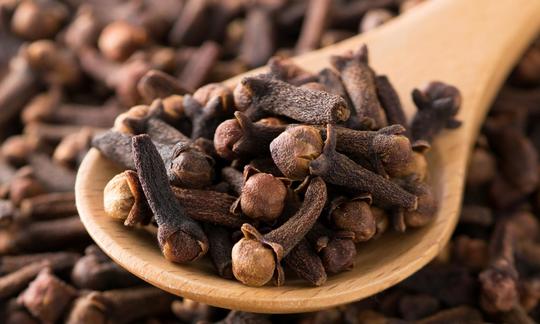

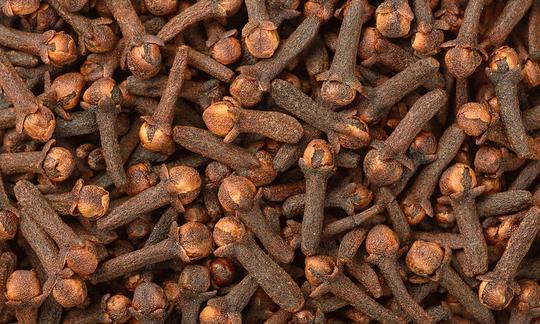

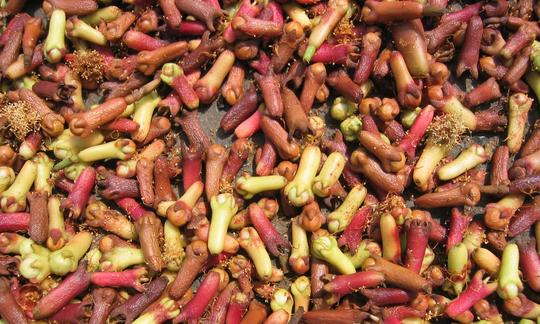

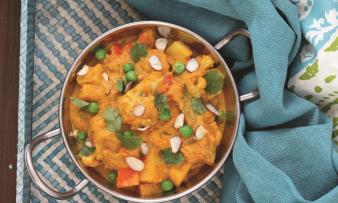
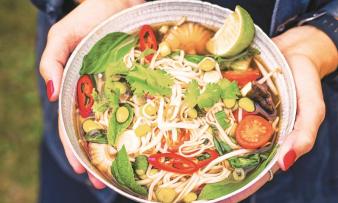





Comments